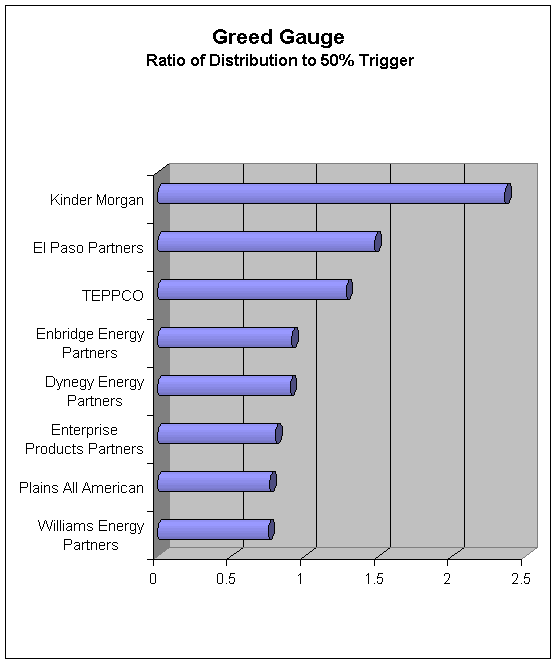March
11, 2002; Dynegy and Williams Partnerships Registered on Greed Gauge
An
exploding general partner tax is the most negative feature of most energy
partnerships marketed today. A
small increase in distribution to unitholders triggers a tax with an incremental
rate of 50% applied on income and return of capital.
The Greed Gauge reading is the ratio of current distribution to the
trigger point for the 50% incremental tax rate (see Chart).
The Dynegy and Williams partnerships have been included though we do not
yet have McDep Ratios on them.
Part
of the illusion of the partnerships is that the general partner calls the tax an
"incentive". Some of the
unfairness of that incentive is that when Kinder Morgan or El Paso, for example,
sell new units as they intend to do, the new buyers are saddled with steep
"incentive" payments before any increase in the distribution.
Another
rationalization by the general partners is that "everybody does it".
In truth, the exploding tax is still in the latent phase in most
partnerships. None, to our knowledge, have actually collected on it to the
extent of those highest on the Greed Gauge.
We
muse whether more competition might not develop among partnerships to give
investors a better deal. One
Machiavellian idea is that Duke Energy, having a stronger capital structure,
repeals the general partner tax on TEPPCO.
That may weaken competitors by making it more difficult for them to take
advantage of investors by selling new partnership units with the exploding tax.
More capital might flow to Duke which then might buy assets cheap from
its competitors and gain a long-term advantage.
